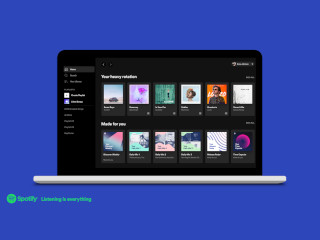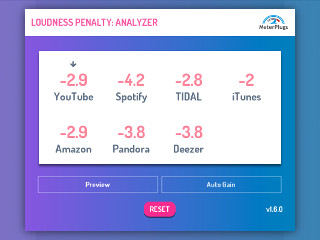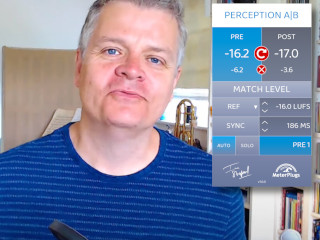Can you make your plugins sound better by adjusting your audio’s levels? Does it make a difference if your audio is at -23 LUFS or -10 LUFS? Have you been misusing your plugins all this time? My answer: “Probably not, but maybe…”
Let’s start by looking at where the “sweet spot” argument may have come from…
Analog Limitations
Analog hardware components are designed to work with signals in a particular range. There’s no getting around this - they are built using physical parts (resistors, capacitors, vacuum tubes, etc.) that have physical constraints. There are limits on the voltages they can handle, for example.
While working with low-amplitude signals on a piece of analog gear, you’ll be limited by the gear’s noise-floor. Ever hear tape-hiss on a cassette? On the flip-side, high-amplitude signals will test the component’s ability to handle high voltage levels. Push an amplifier too hard and it’ll clip, for example.
When working with analog gear, you must find a balance between being loud enough to achieve a good signal-to-noise ratio and being quiet enough to avoid overloading the circuitry.
Why is Digital Different?
Digital processing happens in a virtual environment that has a different set of limitations. In digital, you’re limited by memory, storage, the processing power of your CPU(s) and the size of your CPU’s registers. The latter is fundamental to understanding why digital is more “forgiving.”
What is a register?
A register is used for storing numbers before and after they are processed by the CPU (RAM is too slow for that). A 32-bit CPU has 32-bit registers while a 64-bit CPU has 64-bit registers. The bigger the register, the bigger the number it can store.
Larger registers let us (developers) store more precise sample values, because we have more bits to work with. These days, most DAWs and plugins process audio using single or double-precision, floating-point numbers. They are 32 and 64-bits in length, respectively. That’s double or quadruple the number of bits per sample that a CD has! (CDs have 16-bit samples.)
These large sample sizes give audio engineers (and plugin developers ![]() ) more room for error. For example, it’s OK if a “float” goes above 0 dBFS (decibels, full-scale), since the single-precision range extends above +30 dBFS (that’s positive 30 dBFS). Meanwhile, the high precision of floats virtually eliminates any worry of “noise” (quantization error) being introduced.
) more room for error. For example, it’s OK if a “float” goes above 0 dBFS (decibels, full-scale), since the single-precision range extends above +30 dBFS (that’s positive 30 dBFS). Meanwhile, the high precision of floats virtually eliminates any worry of “noise” (quantization error) being introduced.
In other words, you can do a lot of “nasty” things with floats without damaging the signal. Of course, when you’re ready to bounce down to 16 bits, you need to be careful that you’re not clipping, among other things.
Digital processing sounds great, so what’s the catch?
24-Bit Processing
Unfortunately, floats aren’t the only game in town. Older software, and some present-day hardware use 24-bit, “fixed-point” arithmetic, usually because the hardware is cheaper. One caveat of fixed-point audio processing is that you typically cannot exceed 0 dBFS - doing so will cause clipping.
One way to check for the presence of 24-bit processing is to insert a gain boost before your plugin (or hardware) so that your levels exceed 0 dBFS, and an equivalent gain reduction after. If the result sounds utterly horrible, you can be pretty sure the plugin (or hardware) was not designed to handle signals above 0 dBFS.
Analog Modelling
If you’re using a plugin that was modelled after analog gear, it’s entirely possible that it will have similar limitations to the hardware. In these cases, you may need to experiment with your input levels to see what sounds best. Check the plugin’s manual to see if it recommends specific levels. When in doubt, try -23 LUFS or -16 LUFS.
Summary
Don’t get too carried away finding the perfect level to feed your plugins with. Chances are your plugins will work fine over a wide range of input levels. Possible exceptions include old plugins, plugins modelled after analog gear, and fixed-point hardware.
To be safe, keep your true-peak levels below -1 dBTP. There really isn’t much point in going above that anyway, right?
Can you think of anything else to watch out for, in terms of feeding your plugins with appropriate levels?






